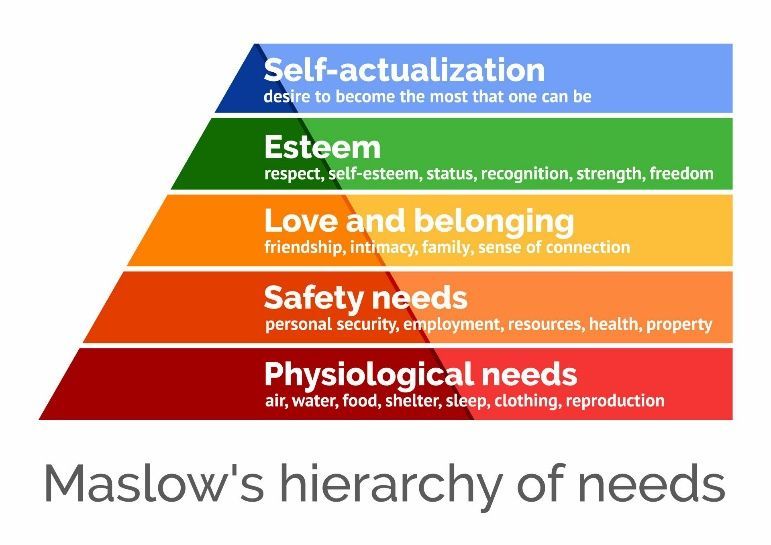The Power of Psychological Safety in the Workplace
By Dr. Nikie Walker, Ed.D. | HR Consultant & Leadership Strategist | 20/20 Walker Consulting
On the first day of class, I set clear expectations for my students: My classroom is a space for learning, and I will not tolerate snickering, laughing, or making fun of anyone for their comments, questions, or opinions. I emphasize that if they don’t feel safe to participate—if they fear being judged or ridiculed—they cannot truly learn. This concept is known as psychological safety, and it is just as critical as physical safety.
Imagine walking into a classroom where you constantly fear for your physical well-being. Your mind would be consumed with thoughts of self-preservation, leaving little room for learning. The same principle applies to psychological safety—when individuals fear speaking up, making mistakes, or sharing ideas, they cannot fully engage or contribute.
According to McKinsey & Company (2023), psychological safety means “feeling safe to take interpersonal risks, to speak up, to disagree openly, and to surface concerns without fear of negative repercussions or pressure to sugarcoat bad news.” This is not just a trendy management philosophy; it’s a fundamental concept rooted in decades of research.
In fact, Maslow’s Hierarchy of Needs, as discussed by McLeod (2024), outlines psychological safety as an essential requirement for growth and productivity. Just as employees need food, water, and shelter, they also need a safe environment—both physically and emotionally—to thrive in the workplace.

Simple Psychology (2024)
Why Psychological Safety Matters in the Workplace
You might be thinking, That’s great for a classroom, but how does this apply to my office? Psychological safety has a direct impact on business success. When employees feel safe to share ideas, ask questions, and take risks, organizations reap significant benefits, including:
- Increased innovation and creativity
- Improved collaboration and teamwork
- Higher employee engagement and productivity
- Enhanced learning and development opportunities
- Greater job satisfaction
- Lower employee turnover
- Stronger diversity and inclusion efforts
- Improved mental well-being (LeaderFactor, 2025)
How to Measure Psychological Safety in Your Organization
Many leaders assume they’ve created a psychologically safe work environment—but have you actually asked your employees? Conducting an anonymous survey (Microsoft Forms or Google Forms can provide this platform for you for free) with a simple 5-point scale can provide valuable insights. Consider asking your team the following questions (Gallo, 2023):
1. If I make a mistake on this team, it is not held against me.
2. Team members feel comfortable bringing up problems and challenging issues.
3. People on this team accept others for being different.
4. It is safe to take risks in this environment.
5. It’s easy to ask for help from colleagues.
6. No one on this team deliberately undermines others’ efforts.
7. My unique skills and talents are valued and utilized.
If the results indicate room for improvement, don’t panic—this is an opportunity to strengthen your leadership approach.
How to Foster Psychological Safety in the Workplace
Psychological safety doesn’t happen by accident. It requires intentional leadership and a commitment to creating a culture of trust. Gallo (2023) suggests that leaders can build psychological safety by:
1. Making it clear why employees’ voices matter. Employees need to know their input has value and will not be ignored.
2. Admitting your own fallibility. Leaders who acknowledge their own mistakes create an environment where others feel safe to do the same.
3. Responding productively. If employees speak up and are met with anger, defensiveness, or punishment, they’ll never speak up again.
Leadership Requires Humility and Open Dialogue
Leadership isn’t about power and decision-making—it’s about listening, learning, and setting aside ego. If you ask employees for their honest feedback, be prepared to hear things you may not like. That’s part of growth. Certainly, a hard lesson I had to learn along the way.
Managing people is hard. Every individual is different, with unique strengths and challenges. But when you create a space for open, respectful dialogue, your employees will feel empowered to contribute their best work.
When I was a practice manager, I told my employees: I want to hear your issues, your problems—and your solutions. I’m not going to act on everything you suggest, but I want to hear what you have to say. A psychologically safe workplace doesn’t mean avoiding conflict or sugarcoating reality; it means creating an environment where constructive conversations lead to real improvements.
In today’s fast-paced world, fostering psychological safety isn’t just a “nice-to-have”—it’s a business necessity. When people feel safe to speak up, the entire organization benefits.
Giving Employees a Voice
Give your employees space to brainstorm together—without leadership in the room. This doesn’t mean you need to schedule a marathon brainstorming session. Instead, keep it simple. Give employees 10 minutes to generate 10 ideas for solving a workplace challenge or improving the customer experience. Or provide a SWOT analysis grid and ask them to identify the organization’s (internal) strengths, (internal) weaknesses, (external) opportunities, and (external) threats from their perspective.
The key is to create a judgment-free zone where ideas can flow, grow, and evolve without fear of criticism. Your employees can provide you perspectives that you can’t because you’re not walking in their shoes every day. They experience challenges firsthand and often have insights that leadership might overlook. When employees are part of the solution, they’re far more likely to take ownership, drive improvements, and enhance their work environment, leading to higher engagement and better retention.
You never know where the next great innovation will come from. Take Liquid Paper, for example—those of us old enough to remember using it might be surprised to learn it was actually invented by Bette Nesmith Graham, a secretary at Texas Bank and Trust, who created it while working for an executive, W.W. Overton.
Your employees are your greatest asset. When given the space and trust to share their ideas, they can come up with creative and insightful solutions that drive meaningful change.
When people feel safe to speak up, the entire organization benefits. So, ask yourself: Is your workplace truly safe for open dialogue? If not, why, and what steps can you take today to change that? And if you're looking for ways to foster a more open and productive work environment, thoughtful conversations are always a good place to start. If you ever need further guidance on how to create that space, I’m always here to help.
References
- Gallo, A. (2023, February 15). What is psychological safety? Harvard Business Review. https://hbr.org/2023/02/what-is-psychological-safety
- LeaderFactor. (2025, January 27). Benefits of psychological safety. LeaderFactor. https://www.leaderfactor.com/learn/benefits-of-psychological-safety
- McKinsey & Company. (2023, July 17). What is psychological safety? McKinsey & Company. https://www.mckinsey.com/featured-insights/mckinsey-explainers/what-is-psychological-safety
- McLeod, S. (2024, January 24). Maslow's hierarchy of needs. Simply Psychology. https://www.simplypsychology.org/maslow.html

